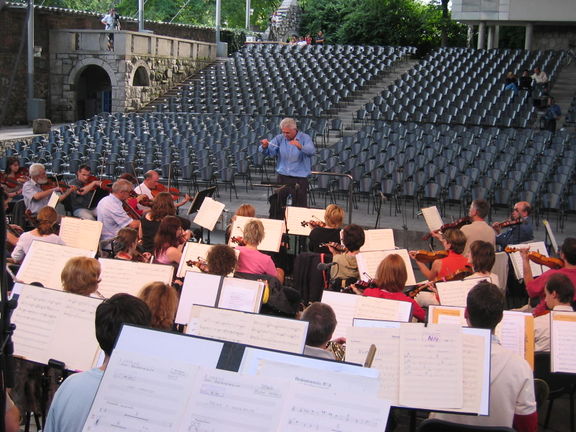Construction of the original Monastery of the Order of Teutonic Knights at Križanke is believed to have commenced in 1228. The earthquake of 1511 severely damaged the monastery buildings and they were partly rebuilt between 1567 and 1579. The original church was completely rebuilt in Baroque style between 1714 and 1715; it was designed by Venetian architect Domenico Rossi in a shape of a Greek cross, and was the first church of its kind in Slovenia. It has an ornate exterior and the gate area is accentuated with pilasters and a typical undulating dome. Slovene masters participated in the building process, including Gregor Maček, who designed the present-day City Hall. The City Museum of Ljubljana keeps the original model of this church. The Knights' Hall was also built during the 18th century.
Križanke continued to serve as a monastery until 1945, when the complex was nationalised. In 1952 representatives of the city of Ljubljana asked architect Jože Plečnik to remodel the now derelict monastery into a venue for Ljubljana Festival.
Jože Plečnik's last great contribution to the city transformed the abandoned monastery into an open-air theatre and festival space. The complex's original Gothic details were gradually subsumed by Renaissance and Baroque elements, as can be clearly seen in the main courtyard which features shallow archways and exuberantly-coloured graffiti. The amphitheatre-like southern courtyard with its vast retractable canopy has since proved to be a superb venue for classical, jazz and rock concerts.



